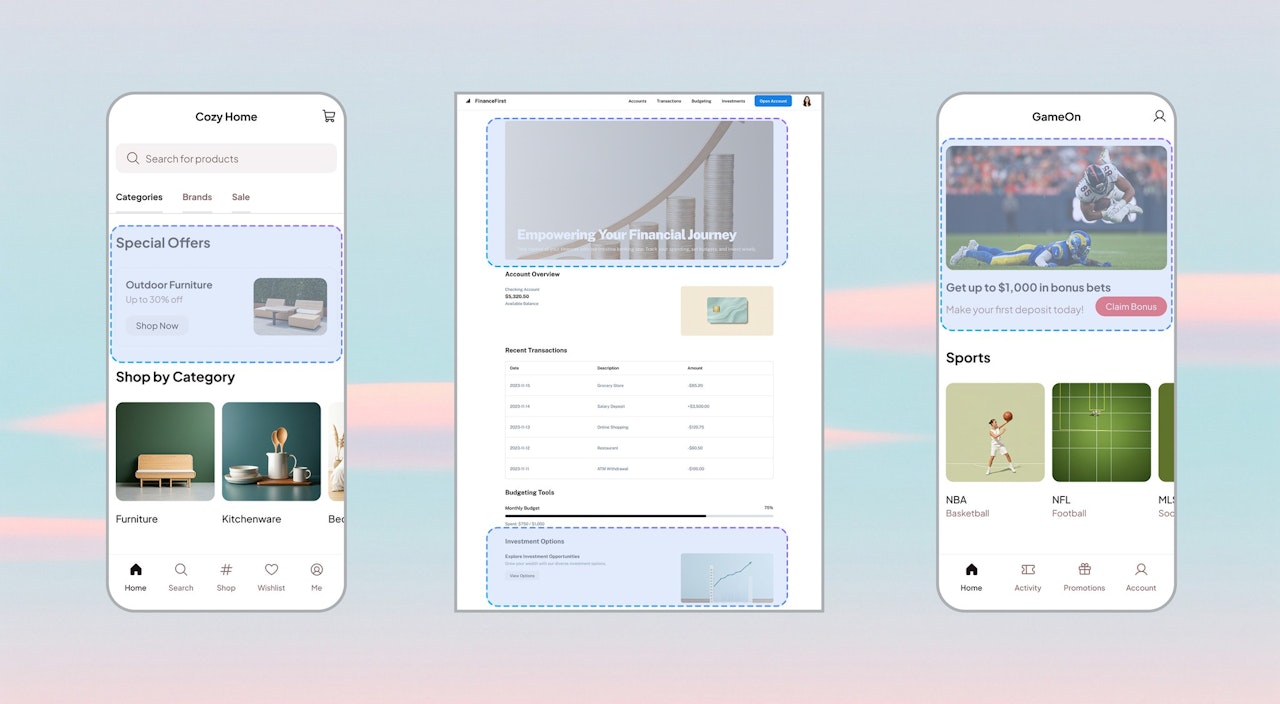Common Use Cases of Agentic Journey Orchestration
![]() Cole StuartJun 3, 20251 min
Cole StuartJun 3, 20251 min

The rise of Agentic Journey Orchestration and AI-driven decisioning is transforming the way marketing and product teams work — not just incrementally, but fundamentally. These systems go far beyond traditional automation by embedding intelligence directly into user journeys, enabling real-time decision-making and hyper-personalized experiences at scale.
Rather than relying on static funnels or rule-based triggers, marketing teams can now deploy adaptive agents that continuously learn from customer behavior, optimizing touchpoints dynamically to increase a number of objectives, like engagement and conversion. Product teams, meanwhile, are using agentic orchestration to test and evolve features in real time, unlocking faster iteration cycles and more responsive user experiences.
These capabilities aren't theoretical. They’re driving measurable gains in campaign performance, customer retention, and product adoption across industries. By integrating decision intelligence and journey orchestration into their core processes, leading teams are shifting from reactive operations to proactive, context-aware engagement strategies.
Let’s explore some high-impact use cases where Agentic Journeys are delivering strategic value.
Retail
Personalized recommendations to drive 2nd purchase based on real-time shopper behavior.
Dynamic promotion optimization to increase conversion and margin.
Customer journey orchestration for omnichannel engagement and loyalty.
In retail, AI-driven customer journeys are revolutionizing how businesses approach upselling, increasing margin with promotions, and dynamically engaging their customers. Instead of generic recommendations, AI analyzes vast customer data—including purchasing history, browsing behavior, and even sentiment—to deliver highly personalized and contextually relevant offers. This goes beyond simple "customers who bought X also bought Y" to understanding individual preferences and predicting needs.
Banking and Fintech
Driving onboarding completion.
Hyper-personalized financial product offers tailored to life stage and goals.
Customer retention and upsell journeys using intent-driven insights.
Banks and fintechs use AI decisioning to intelligently recommend additional financial products — such as credit cards, loans, or investment accounts — tailored to each customer’s financial profile and timing, significantly boosting product penetration and wallet share.
Consumer SaaS
In-product personalization to tailor features, nudges, and onboarding paths.
Feature adoption journeys driven by user behavior and milestone tracking.
Usage-based churn prediction and retention offers triggered in-session.
AI decisioning powers adaptive upgrade paths, timely feature unlocks, and plan optimization offers that feel intuitive to users — increasing conversion to paid tiers and expanding account value without friction.
B2B SaaS
AI-powered onboarding flows that adapt based on team behavior and setup progress.
Next-best-action recommendations predicted based on likelihood to expand.
User journey orchestration for activation and retention across product touchpoints.
For B2B SaaS, AI decisioning identifies expansion signals and usage patterns that trigger well-timed upsell motions — whether it's new seats, feature tiers, or product modules — accelerating revenue growth within existing accounts.
eCommerce
Personalized homepage, search, and cart experiences using contextual data.
Smart bundling and cross-sell strategies based on past purchases and intent.
Cart abandonment recovery journeys using behavioral and channel signals.
AI decisioning drives intelligent product bundling, personalized add-on suggestions, and dynamic checkout offers that elevate basket size and repeat purchase value — all tuned to individual shopper context.
Media & Entertainment
Content personalization and recommendations based on viewing history and engagement.
Subscription lifecycle orchestration with upsell and retention triggers.
Predictive engagement modeling to surface trending or high-impact content.
Media platforms use AI decisioning to guide users toward higher-value subscription tiers, exclusive content packages, or event upsells, based on engagement depth and consumption preferences.
Hospitality and Leisure
Personalized offers and upgrades using guest preferences and history
Journey orchestration pre-, during-, and post-stay for loyalty and satisfaction.
Churn prediction and proactive retention offers triggered mid-session or post-session.
Hotels, resorts, and leisure operators use AI decisioning to present compelling upgrade, amenity, and experience offers throughout the guest journey — increasing per-stay revenue while enhancing perceived value.